Sea fight
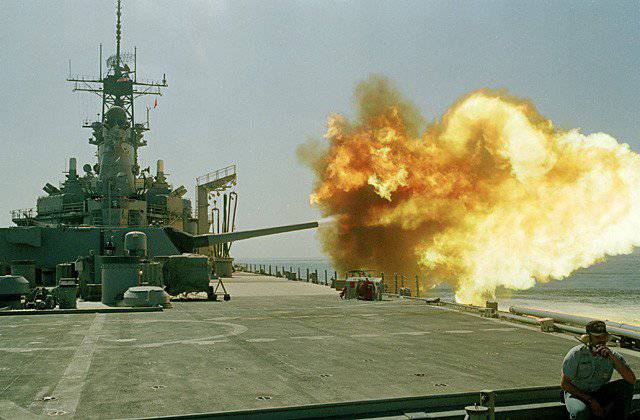
Destroyers and frigates in new wars
Local wars after 1945 did not differ in a large number of naval battles. The fighting was mostly on land and in the air. However, in the course of some wars, they played an important role. However, with the exception of the Falklands War, naval battles took place in parallel with the main battles, not having a major impact on the outcome of the war.
In particular, this is exactly what happened during the Arab-Israeli wars. The famous battle at Port Said of 21 on October 1967 of the year, during which two Egyptian missile boats of the Ave. 183P sank the Israeli destroyer Eilat, had rather a moral meaning. Even its influence on the naval strategy was ultimately exaggerated: “Eilat” was built in the forties, when there were no RCCs in principle yet, respectively, it could not repel the blow of the Egyptian boats. It’s just that the Israelis have become a bit of a blight, finding themselves invincible and having lost all caution.
Soviet aid to the Arabs was not limited to arms deliveries, it came to direct participation in hostilities. So, at the beginning of 1968 with three landing ships of the Black Sea fleet under the guise of a patrol ship and a minesweeper, a landing party of about 400 marines with four tanks T-54, ten amphibious tanks PT-76 and twenty-one BTR-60 on the Asian coast of the Suez Canal in order to maintain control over the entrance to the canal for Egypt. The Israelis did not dare to interfere with the landing.
The most successful operation of the Egyptian fleet (after the sinking of Eilat) was the raid of the destroyers Nasser and Damietta aimed at firing on coastal targets of Israeli forces 40 kilometers east of Port Said on the night of November 10 1969. Apparently, the Israelis suffered very serious losses as they try not to mention this event. At the exit, the destroyers were unsuccessfully attacked by forty Israeli aircraft. Of course, the operation was led by advisers from the USSR. Part of her success, of course, was due to the proximity of the objects of attack to the Egyptian bases.
During the October War, 1973 for the first time, fought between rocket boats. In these battles, the Israelis were much better than both tactics and equipment. Their own production of “Gabriel” PKR was much smaller in size than the Soviet Soviet-made X-NUMX, but they were much better suited for the battle between the boats. At the same time, Israeli boats had stronger artillery weapons, thanks to which they successfully finished off enemy boats that had been damaged by the “Gabriel”.
In the battle of Latakia on the night of October 7, five Israeli boats with impunity sank three Syrian missile boats, one torpedo boat Ave 123, one minesweeper Ave 254. During the repeated attack on Latakia on the night of October 11, one of the missile boats of the 205 and 183Р missiles were sunk, along with the Japanese and Greek merchant ships.
Between the missile boats of the Navy of Israel and Egypt, there were three battles, in addition, the Egyptians on the first night of the war fired on anti-ship missiles at Israeli coastal targets, and quite successfully. In these battles, the Egyptians lost four boats of the 205 Ave., and two boats of the 183P Ave. were sunk in Port Said by Israeli combat swimmers, who, however, died during this operation. Egypt laid claim to several sunken Israeli rocket boats, but after the war they all ended up in the ranks. The only loss of the Israeli Navy was the patrol boat sunk by the Egyptian coastal artillery.
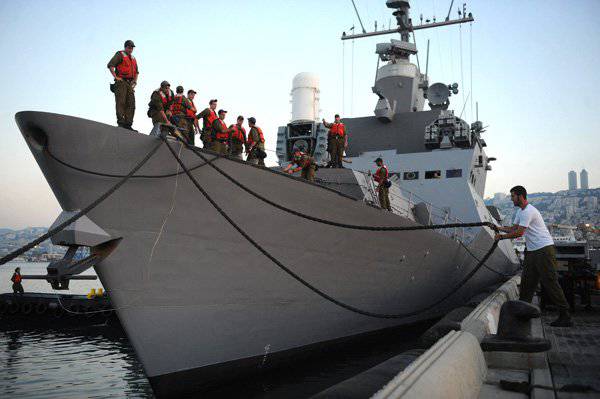
The latest episode of the naval war between the Arabs and Israelis was the attack of the Hezbollah group using Chinese-made C-802 coastal anti-ship missiles (or its Iranian counterpart Nur) against the Israeli Hanit 14 corvette on July 2006. Here repeated story "Eilat" - the Israelis were too arrogant and missed the attack, which could well repel. True, the consequences were less fatal - the corvette received moderate damage, only four sailors died.
The Navy of another Arab country, Libya, in March 1986 took part in a short conflict with the US Navy, as a result of losing the ROCs of the 1234 prospect of Soviet construction and the French-type Combat-2 missile boat. Both were sunk by American carrier-based attack aircraft A-6 (according to some data, the IRAs were not sunk by attack aircraft, but by the Garpun missile from the Yorktown missile cruiser). And in 2011, British Tornado planes sank the Libyan Soviet-made frigate, 1159 Avenue, and three more Combatant-2-type missile boats in Tripoli, which, however, had completely lost their combat capability by that moment.
The Soviet Navy took a direct and quite active part in the events on the Horn of Africa in 1970 — 90-s. In 1977, war broke out between Somalia and Ethiopia, both of which were considered allies of the USSR. Moscow made a choice in favor of Ethiopia, which led to the need to evacuate Soviet specialists and their families from Somalia. To ensure the safety of this 20 process, on November 1977, a Soviet naval landing force was landed in Mogadishu, which really ensured the safety of the evacuation.
Ethiopia with the help of the USSR and Cuba defeated Somalia, after which it became involved in a difficult war with its own (at that time) rebellious province of Eritrea, which accounted for the entire coast of Ethiopia. USSR provided Ethiopia a huge amount weapons and sometimes fought directly. So, in December 1977-th - January 1978, the Pacific destroyer Veski (56 Ave.) fired on Eritrean positions in the Massawa region. In June, a Soviet landing force landed on Massawa on 1978 and entered into battle with the Eritreans, preventing them from taking the city. However, there were no casualties among the marines. Perhaps the Soviet troops would continue to participate in this war, but then Afghanistan began. Therefore, Moscow was limited to the supply of weapons and sending advisers, and the Soviet Navy used a base on the island of Dakhlak off the coast of Ethiopia, that is, Eritrea.
The severe crisis in the USSR led to a reduction in Ethiopian assistance, thanks to which the Eritreans established control over the entire province and began to attack Ethiopia itself. They had enough modern equipment, including combat boats, with the help of which they were able to attack the Soviet naval base, which was completely isolated. In mid-May 1990, a battle took place between the Black Sea minesweeper Scout (Ave. 266M) and four Eritrean boats, during which, possibly, one of the enemy's boats was sunk. 27 May AK-213 Black Sea Patrol Boat (205P Ave.) also joined the battle with four Eritrean boats, sinking two or three of them. After this, the enemy did not venture to engage in direct naval battles with Soviet ships. But Moscow decided to evacuate the naval base from Dakhlak, since its existence had lost its meaning. October 19 1990 engaged in the withdrawal of the base of the convoy of the Soviet Navy (MPK-118 "Komsomolets Moldavii" (Ave. 1124)), the minesweeper "Paravan", two BDK, the tanker "Sheksna") was shot from the coast by artillery and RSO Eritreans. The return fire of the IPC battery was suppressed, the ammunition depot was blown up. It was the last battle of the Soviet Navy.
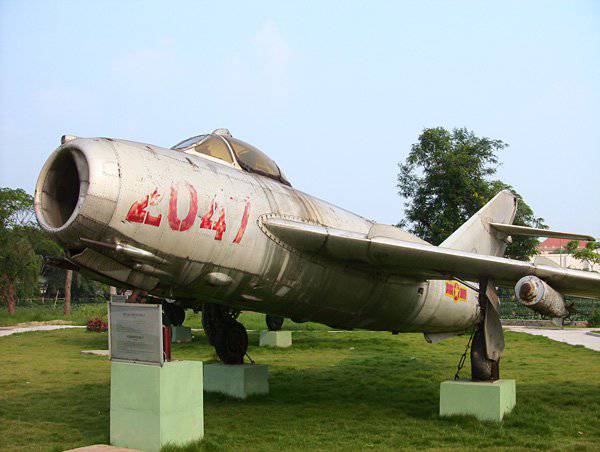
The Vietnam War began formally at sea - with the so-called Tonkin incident. Ostensibly 2 August 1964, torpedo boats from North Vietnam attacked two American destroyers in the Gulf of Tonkin. It is still unclear whether this episode was in fact or whether the Americans invented it to start a war, or whether the Americans imagined. In the course of further combat operations, there were no sea battles due to the incompatibility of the forces of the parties. Only in April, 1972, when the armed forces of Northern Vietnam launched a general offensive with the aim of completely defeating the enemy, two MiG-17 attacked the American squadron (one cruiser, three destroyers), which was shelling the North Vietnamese troops on the coast. Although these small fighter planes were completely unsuitable for striking large warships, they managed to inflict serious damage on the Highgby destroyer, disabling the aft artillery tower. The Americans claim that they have shot down one MiG, the Vietnamese deny it. In any case, this was the first successful air attack on US Navy ships after World War II.
At the same time in the South China Sea there is a long-standing conflict over the ownership of the islands of Paracel and Spratly. Beijing, in accordance with its national traditions, claims all the sea. Of course, the other coastal countries do not agree with this, but only Vietnam has direct resistance.
In January, the 1974 th battle took place for the Paracel Islands between the Chinese Navy and South Vietnam. On the Chinese side, six patrol boats participated in the battle (four Soviet-built 122 Ave, two domestic 037 Ave. Hainan), from the South Vietnamese - three frigates and one American-built corvette. All ships were very old and primitive. The real superiority in forces was on the side of the Vietnamese, but the Chinese won the battle, sinking the enemy's corvette, after which the frigates fled. Almost all Chinese boats were seriously damaged.
In March, 1988 was fighting for islands in the Spratly archipelago between the Chinese Navy and the now unified socialist Vietnam. However, it is difficult to call it a battle: three Chinese frigates, that is, full-fledged warships, were attacked by two Vietnamese cargo ships and one landing ship (American built in the 1940s). Both cargo ships were sunk, the landing ship was heavily damaged and thrown onto the island. However, although the forces were incomparable, the Vietnamese put up extremely fierce resistance to the Chinese, preventing them from seizing the island, despite the destruction of the ships. The ships of the USSR Navy, based in Cam Ranh, did not render any assistance to the Vietnamese, although they had corresponding legal obligations. Just as in January 1974-th, the US Navy ships from Subic Bay in the Philippines did not help the South Vietnamese, despite, again, their commitments.
All of the above sea battles did not have a real impact on the outcome of the respective wars, or were simply isolated episodes.
Fighting was very active at sea during the Indo-Pakistani war in December 1971. On the very first day of the war (December 4), the Indian destroyer Rajput (British forties) sank the Pakistani submarine Gazi (American forties) in the Bay of Bengal. On the night of December 5, three Indian missile boats of the 205 Ave., guarded by two frigates of the 159 Ave. (all Soviet-built), raided Karachi, sinking the Khyber destroyer, the Muchaghis minesweeper, and the Liberian transport with american ammunition for the pakistani army. The destroyer "Shah Jahan" was heavily damaged and immediately scrapped after the war. It should be noted that both Pakistani destroyers, as well as the Israeli Eilat, were built in the United Kingdom in the forties, when there was no talk of PKR. Nevertheless, the success of the Indians led to the temporary absolutization of missile boats. On the night of October 15, the Indian Navy forces of four boats repeated the raid on Karachi, sank the Panamanian, Liberian, English and Greek ship, burned at least half of the fuel tanks in the port.
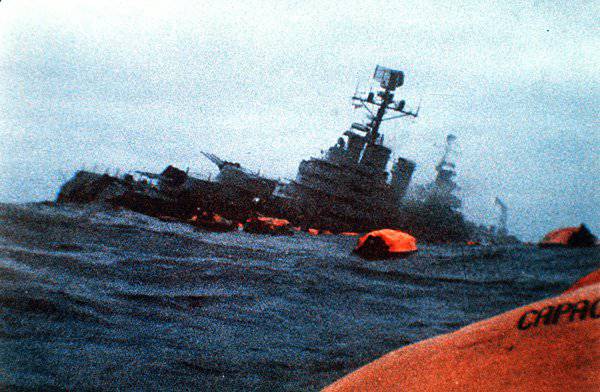
October 9 Pakistanis took a partial revenge: their submarine "Hangor" (the newest at that time French type "Dafne") sank the Indian frigate "Hukri" (again, the British ship of the forties). Today, this is the only victory of the diesel submarine for the entire period after 1945 (the second case was the sinking of the South Korean corvette Cheon An in March of the 2010, but there is no objective evidence that it was sunk by the North Korean submarine).
The Indian aircraft carrier Wickrant (British-built with the British Sea Hawk attack aircraft), guarded three frigates, operated in the Bay of Bengal. A significant number of transport vessels, as well as river warships and boats in East Pakistan, which as a result of this war became an independent republic of Bangladesh, sunk its Sea Hoki. However, here the Indians worked in landfill conditions, since the only submarine on this theater of operations (the same "Gazi") and the entire combat Aviation Pakistanis lost on the very first day of the war.
In general, during the 1971 war, fighting at sea had, in contrast to other wars, strategic importance: the Indians paralyzed the operations of the Pakistan Navy and maritime trade, completely isolating West and East Pakistan from each other, which contributed to the rapid overall victory of India.
The Falklands War of April - June 1982 was the only one after 1945, in which the maritime component dominated. Initially fought "in his field," Argentina had a significant superiority both at sea and in the air. But on the side of Great Britain turned out to be technical and tactical superiority. The turning point of the war was the sinking of the British nuclear submarine "Conqueror" of the Argentine cruiser "General Belgrano" (so far this is the only PLA victory in the history of sea wars). In a sense, the history of Eilat and Khyber was repeated: the cruiser was introduced into the US Navy under the name Phoenix in 1938 (sold to Argentina in 1951), when no one could imagine the appearance of atomic submarines. However, the death of the cruiser completely destroyed the Argentine fleet. Only the San Luis submarine (at that time the newest German construction, 209 Ave.) went on the attack on the ships of the British Navy several times, but did not achieve success. All other losses both fleets suffered from aviation. The Argentines lost a submarine (American construction of the forties), a patrol ship and a transport ship (another patrol ship and one transport ship were captured by the British on Falklands). The British lost two destroyers of the Sheffield type, two frigates of the Amazon type, the container ship Atlantic Conveyor and the landing ship. One of the destroyers (Sheffield itself) and the container ship were sunk by the Exochet anti-ship missiles, launched from the Super Etandard attack aircraft (both French-made), the other four ships were conventional bombs with Mirage and Skyhawks. Many British ships were hit by bombs, but a very large part of them did not explode (they were old American-made bombs). However, the British “Harriers” (who, thanks to their “verticality”, could take off not only from aircraft carriers, but also from destroyers and frigates) and shipboard SAMs knocked out most of the Argentine aviation, which provided them with full air superiority directly over the Falklands, and the blockade of the Argentine garrison islands was organized from the first days of the war. All this provided the British victory.
Very significant was the maritime component of the Iran-Iraq war. At its initial stage, there were fights between missile boats - Iraqi Ave 205 and Iranian French-type Combat-2. Back in the first month of the war (in September, 1980), four Iraqi boats of the 205 Ave. were sunk (two by Iranian boats, two by aviation). 28 November The 1980 of the year in the western part of the Persian Gulf was the largest air-sea battle during the war, in which Iran won a major victory. His missile boats sank two Iraqi boats of the 205 Ave., and the F-4 and F-5 aircraft - three more missile boats of the 205 Ave. and four torpedo boats of the 183 Ave., and also shot down six Iraqi MiG-23s, one MiG-21 and French-made SA321 helicopter. Iran has lost only one missile boat (sunk the PKP P-15 from Iraqi boats) and one F-4 (shot down by the Iraqi MiG-23). As a result of this battle, the Iraqi Navy, in fact, ceased to exist.
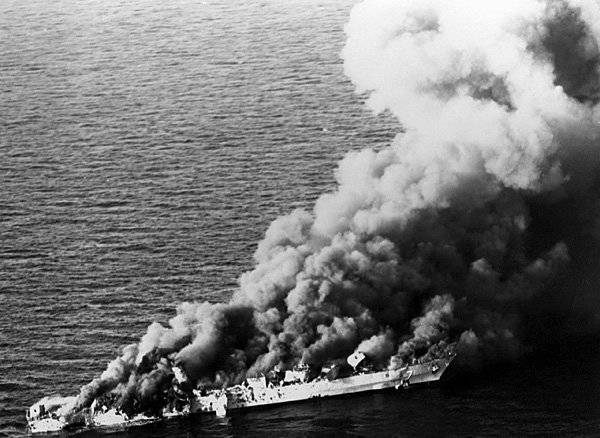
After this, the war at sea continued in the form of attacks by the aviation of both sides (and from the Iranian side, warships and boats) against tankers coming from enemy ports. Nationality tankers did not matter. During the war, an 451 attack was launched on ships in the Persian Gulf (283 from Iraq, 168 from Iran). 11 ships lost, 340 damaged. The Iraqis were much more active in this war. For example, in March, their Tu-1988 bombers set fire to two Iranian supertankers, Avai (22 deadweight, 316 tons) and Sananday (379, 253 tons), and more than 837 people died in March. Moreover, the 50 of May 17 of Iraq, the Mirage-F1987, struck down the American frigate Stark (like Oliver Perry) with two anti-ship missiles, killing 1 sailors. The frigate did not sink only because one of the missiles did not explode.
However, the United States did not just support Iraq during this war, but since the fall of 1987, they began to fight on its side. In September, the Americans damaged 1987, after which they captured and blew up the Iranian landing craft. All accusations of attacks on merchant ships were directed only at Iran, even the Iraqi attack on Stark was swallowed by the Americans. At the same time, it must not be forgotten that the direct aggression of Iraq with the aim of seizing the oil-rich regions of Iran’s south-western regions was the cause of the war. But that was forgiven Saddam Hussein.
17 April 1988, the Iraqi Armed Forces launched a general offensive against the Iranian forces in the southern (main) sector of the front. By a surprising coincidence, the next day, the US Navy conducted a major operation in the Persian Gulf against the Iranian Navy. On the American side, the nuclear aircraft carrier Enterprise, two cruisers, four destroyers, and four frigates participated in the operation. As a result, a frigate, a missile and a patrol boat of the Iranian Navy were sunk, another frigate was heavily damaged, two Iranian oil platforms were destroyed. This drew off part of the Iranian forces from the front and certainly helped the success of the Iraqi offensive.
Inspired by American support, Saddam Hussein, just two years after the end of the war with Iran, committed a new aggression - against Kuwait. In the course of this aggression, six of the eight rocket boats of the Kuwaiti Navy were captured by Iraqi forces, which recreated the Iraqi fleet.
But it turned out that aggression against Iran can be carried out, and against Kuwait in no case. Iraq was defeated in January – February 1991 during the Desert Storm. At the same time, all former Kuwaiti missile boats were sunk by British and American aircraft.
Thus, in the course of local wars, it was confirmed that aviation is the main enemy of the fleet. In the course of the October and Iran-Iraq wars, battles between rocket boats took place, and the only "classic" naval battle of the Artillery was at the Paracel Islands (AK-213 can be considered as such against the Eritrean boats). Apparently, battles between boats of the naval forces of developing countries that do not fundamentally affect the outcome of wars are also possible in the future. If major naval battles happen, then only if the Chinese Navy participates in them.
Information